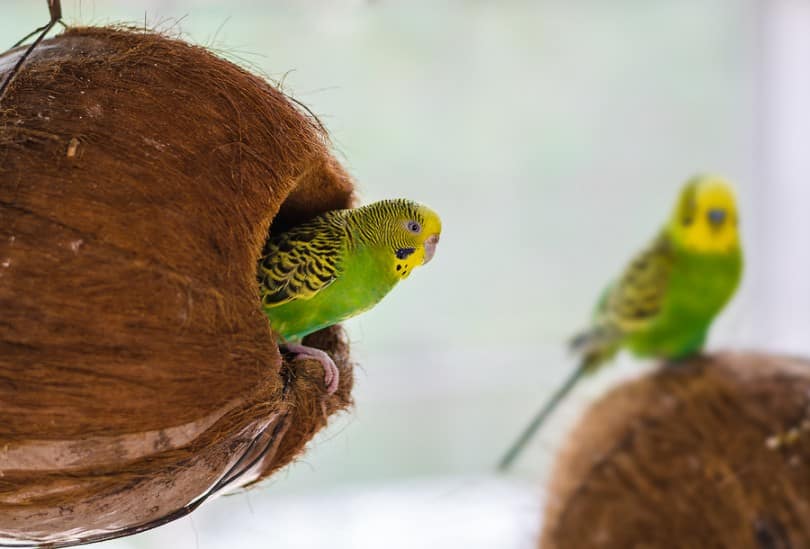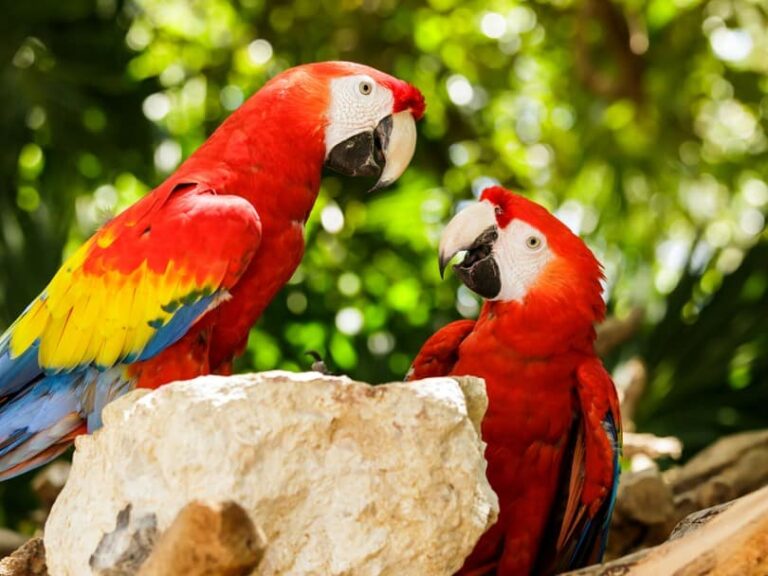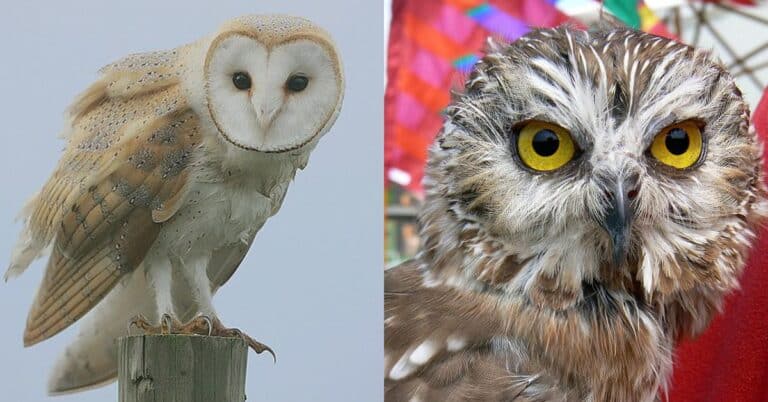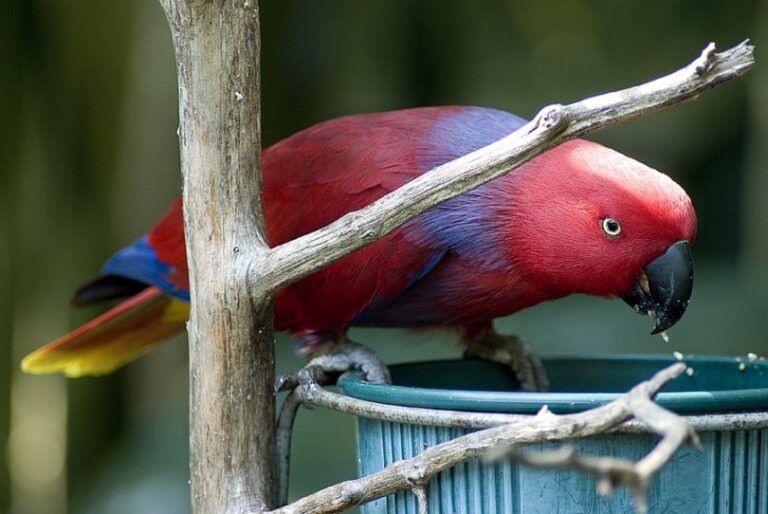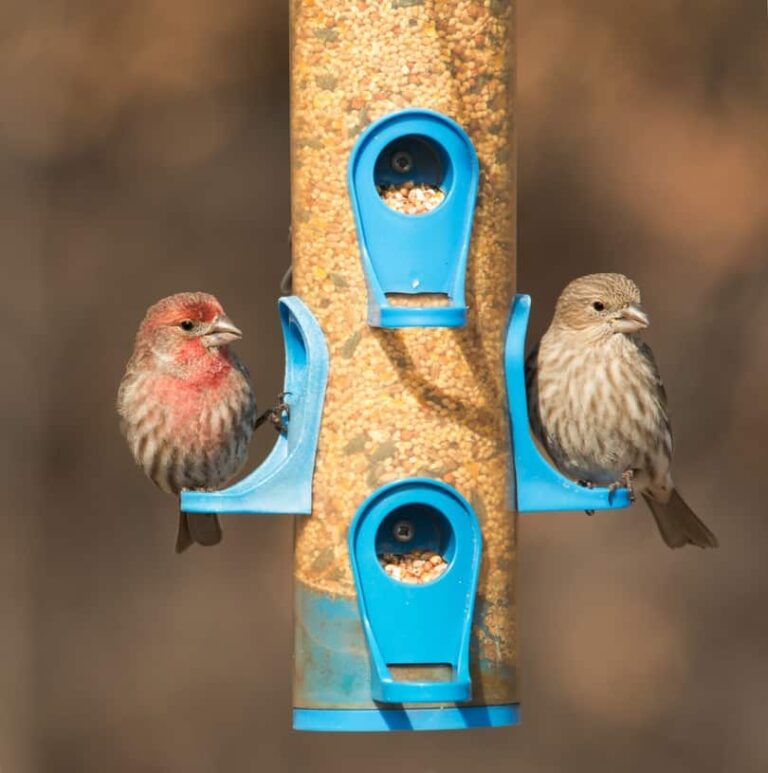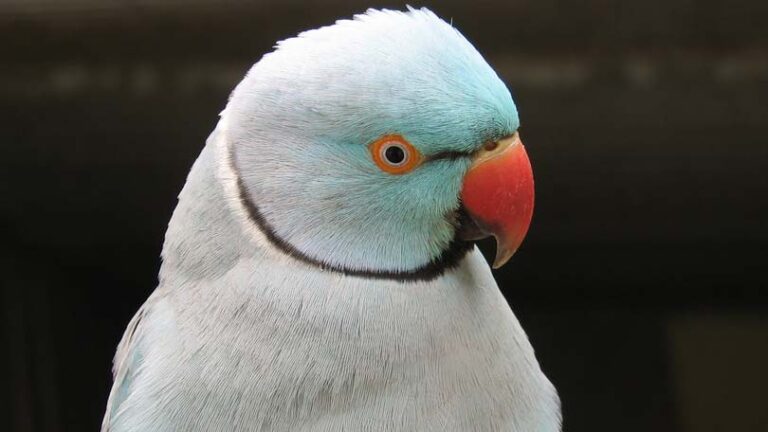Budgies / Budgerigars
The Budgerigars are commonly known as Budgies or common pet parakeets. Their biological term is Melopsittacus Undulates. These are small, long-tailed parrots that prefer eating seeds. They are the single species present in the Melopsittacus genus. They are the inhabitants of the harsh inland and drier parts of Australia for the past 5 million years. The original form of this bird is found in a yellow and green combination, but the breeding species are available in different colors like blue, gray, white, and many other colors. They have a small crest, and the nape of their neck has scalloped markings. These birds have emerged as one of the most popular pets, mainly due to their small size, affectionate behavior, and mimicking ability. The first record about these birds in ancient history was made in 1805.
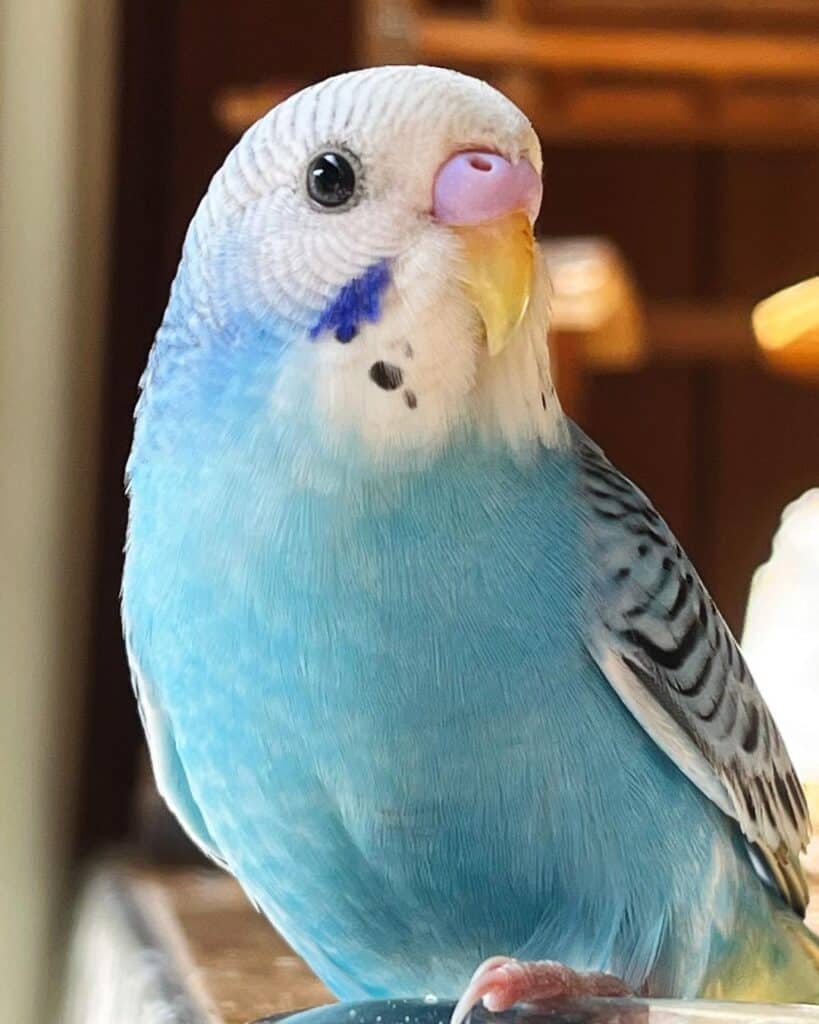
Description
These parrots are small structured and attain a height of 18cm, and weigh around 30 to 40 gm. The adults have a yellow face and forehead, whereas younger ones have black stripes from the forehead till the nose. Budgies have a pale green body, and the mantles exhibit a pitch-black patch. The cheeks have dark purple splashes, and a series of 3 black dots can be seen across the neck. The tail displays a greenish-blue and sometimes purple color, but the exterior part of the tail has a band of yellow shade. The flight feathers on the wings are greenish-black in color, and the coverts are black with fringes in yellow shade. This beautiful combination of features on the wings is visible only during flight. The legs are bluish gray in color and have zygodactyl toes. The bill has an olive gray shade.
History
Budgies are believed to be present before the human evolved. But the first record of this bird was in 1805 by a famous English Botanist and Zoologist named George Shaw. Although the Budgerigar was popular in those days, it had first reached the England e only by the year 1840, and it was brought by an English Ornithologist, John Gould. By the year 1850, the first captivity of this bird was recorded. Since then, people realized how easy it was to breed these birds, after which the Budgerigar turned into a popular pet bird in every household. In 1875, the yellow budgie was bred for the first time in Belgium. Just over six years, in 1881, the introduction of sky-blue colored Budgerigar was made by a Dutchman. Since 1920, many varied varieties of the colored budgies were invented by hybridization. Different colored birds like mauve, cobalt, dark green and olive green types were developed. In those days, these parrots were very costly, and the breeders made a good profit out of it. During the 1845 period, the price of the ordinary green-colored budgies were 50 dollars, and the other colors of Budgerigar like white, blue, and yellow earned double cost double the ordinary green one.
Reproduction
Like the other parrots, the Budgies in the wild also required a cavity or a hollow in the tree for their breeding purpose. If provided with a good nest box, they are the easiest type of birds to breed in captivity. Typically, the eggs are pearl white in color and have a length of 1 to 2 cm. The female budgie can lay eggs without mating a male bird, but the eggs will never hatch and become infertile. During the egg laying process, the cere of the female bird turns into a crusty brown shade. She lays eggs every other day, but in the beginning, after the first egg, there is a gap of two days before laying the second egg. The female bird lays around 4 to 8 eggs in a clutch. The incubation process starts from the day, when the second or third egg is laid until 21 days. They are mostly fed by their male pair during the incubation period. Usually the female bird does not allow any male bird to enter the breeding nest. Due to the incubation process starting from the arrival of second egg, there will be an age difference of around 9 to 16 days between the last and the first hatchling. It is said that, sometimes, due to the uneasiness inside the nest box, the parents eat their own eggs.
How to Grow At Home
Food
To give your pet a variety diet, introduce new items like lentils, pulses, seeds, nuts each day. The birds having seed-diet regularly can be difficult to convince for trying new food. But by hook or crook, try to make them eat the other foods which are good in nutrients. A pellet diet is also a good source of nutrients, as the birds cannot pick out their favorite seeds out of the pellet mix. Plenty of fruits and vegetables should also be provided and should constitute more than 50 % of their daily diet. Cooked food and human food can also be introduced for a change. The suitable vegetables are corn, broccoli, carrots, beans and spinach. For variety, sprouted pulses and seeds can also be added to your pet’s diet.
Cage
Though Budgies are small in structure; they are very active and energetic birds. Pet birds should always be provided with big cages, as they spend most of the time inside it. There should be enough space for them to flap their wings, move around the cage, slowly fly and do some exercise like climbing the bar or hanging. They should also be provided with swings and perches. They should be kept busy; hence there should be space to keep parrot toys to play. The minimum size of the cage should be 18 inches wide, 20 inches tall and 18 inches long. Besides these things, there should also be enough space to keep the food and water vessels. The space between the bars should not be more than ½ an inch, or the wings and toes of the tiny birds can get choked between the bars.
Care
Like all the other pets, they too love to be around their human keepers, and often seek attention. They must be regularly stimulated to be mingling and social. If you cannot spend enough time with these birds, try to buy a pair for them. Provide enough toys to play and some chew toys to chew. Regularly clean their cage and dishes with mild detergents. They should have easy access to the supply of fresh water and seeds at all the times. Regularly, change the water and replace it with fresh water. Love the birds, and they will love you back.
Health ailments
The Budgies are prone to some ailments like other parrots. In the beginning itself, immature budgies are affected by a disease called as “splay legs”. This is the condition in which one leg is permanently bent in the opposite direction. The other commonly found ailments are bumble foot, scaly legs and face, polyomavirus, French molt, tumor and feather plucking.

Having discovered a fondness for insects while pursuing her degree in Biology, Randi Jones was quite bugged to know that people usually dismissed these little creatures as “creepy-crawlies”.

